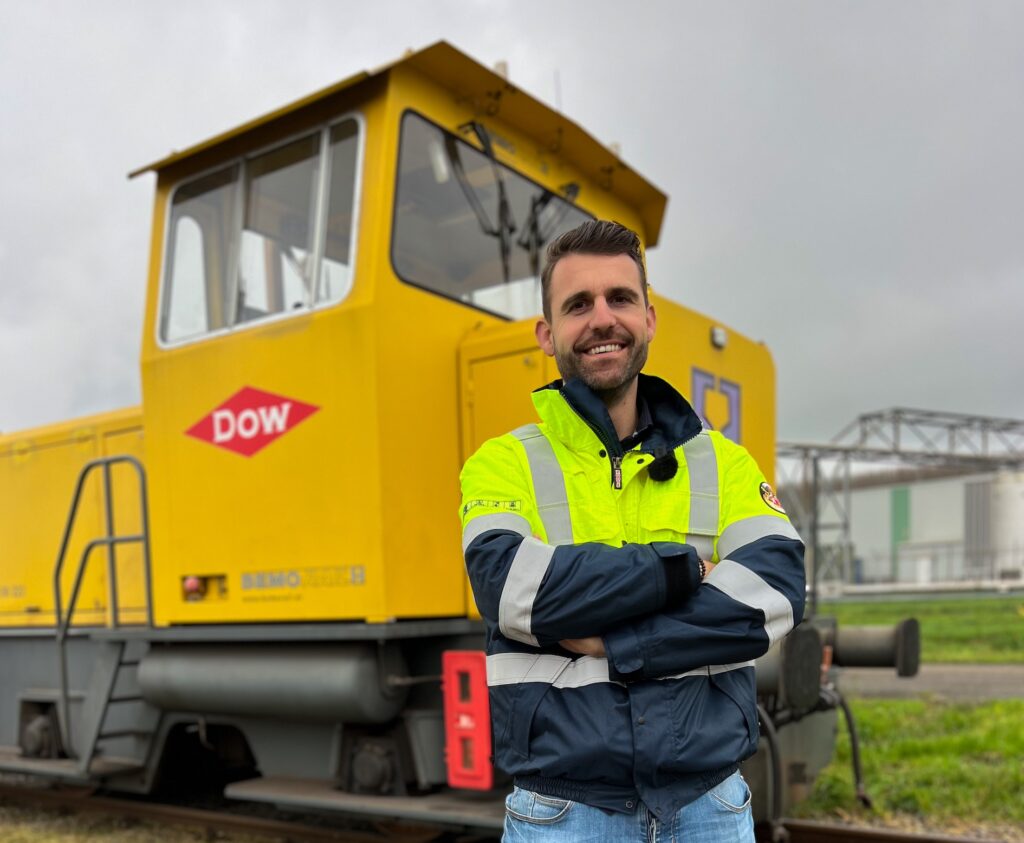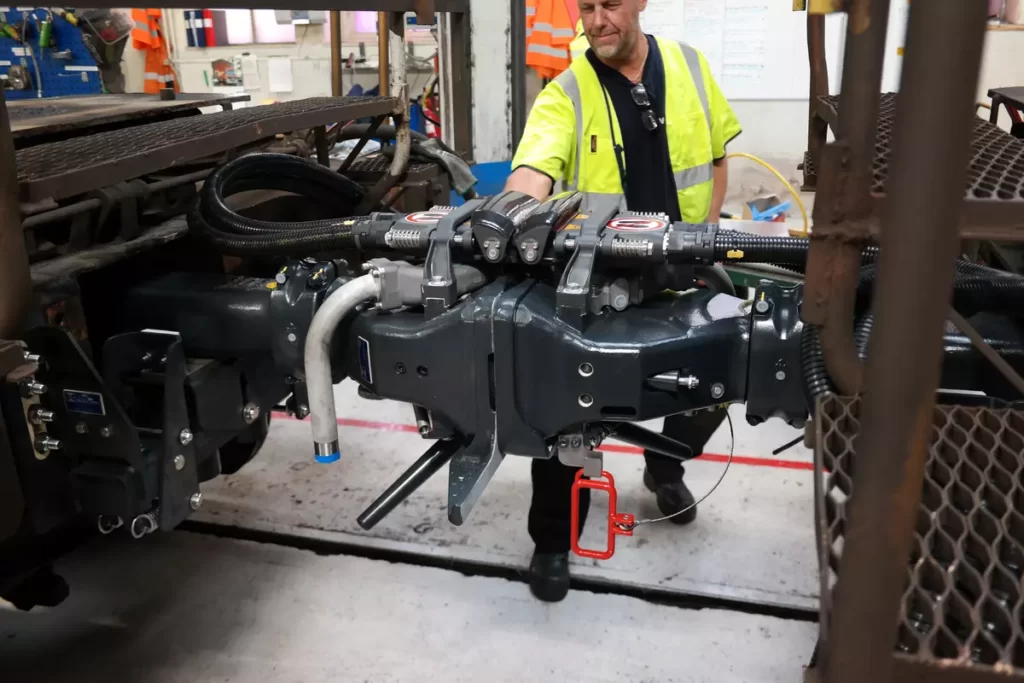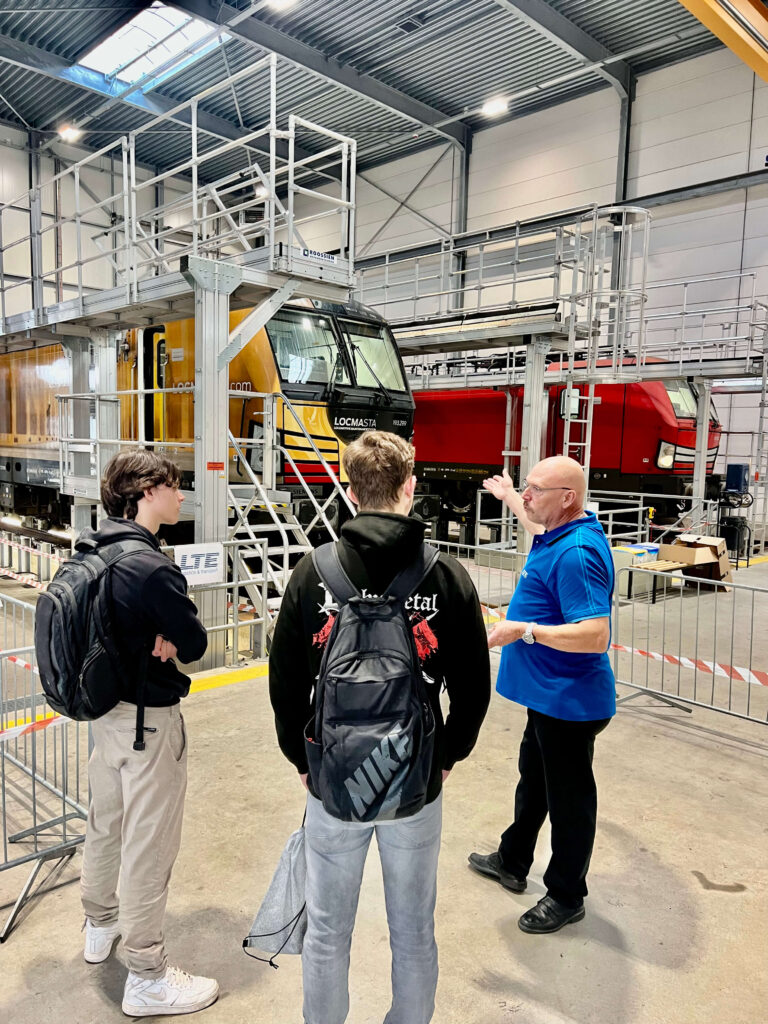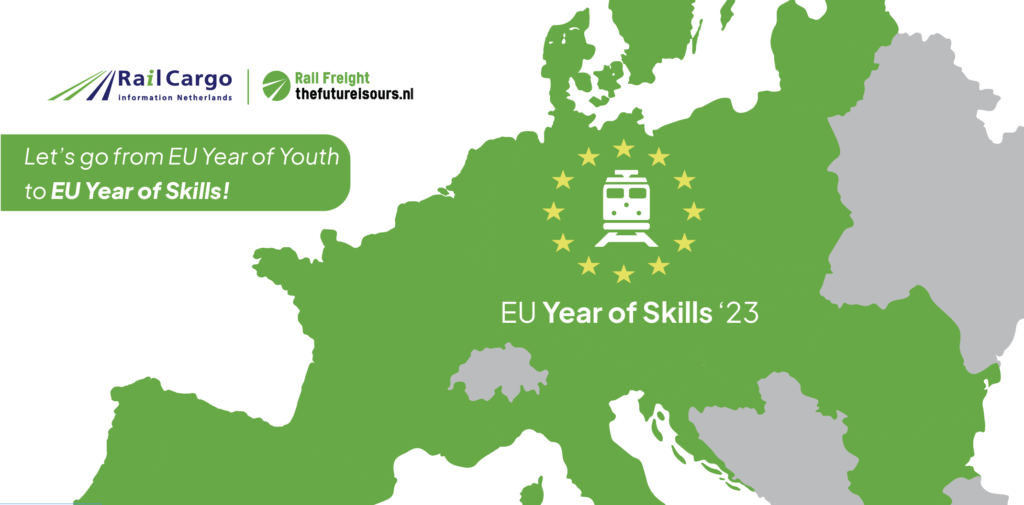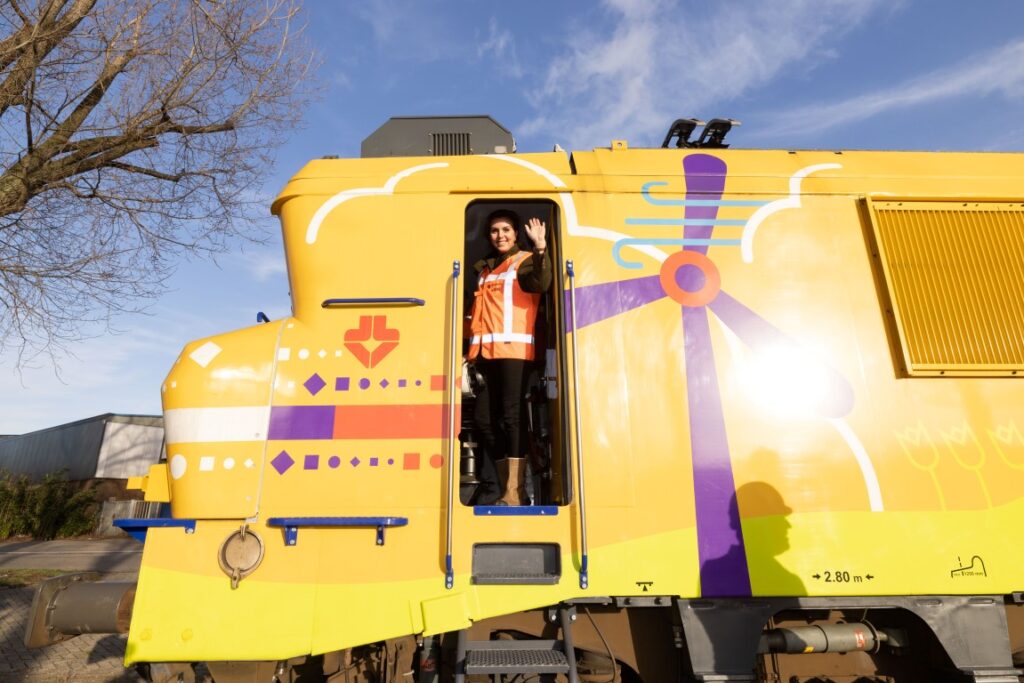CargoBeamer brengt modal shift dichterbij
From Cabooter’s various rail terminals in North Limburg, goods travel by rail throughout Europe and vice versa. There is even a rail link to China. But to achieve a real modal shift to rail transport, you need to be very persuasive.
At the end of last year, it was put into operation: logistics service provider Cabooter’s new rail terminal Greenport Venlo. A huge 280-hectare site north of Venlo, including eight 900-metre tracks. The other two terminals of Cabooter are located further away in Blerick and just across the border at Kaldenkirchen. “From these terminals, we offer our customers everything related to rail freight transport,” says Peter Pardoel, a member of Cabooter’s management team. “In the first place, of course, we act as a point of departure and arrival for all their products, in all possible loading units: containers, trailers, swap bodies, and more. But we also take care of storage, pre- and on-carriage, loading and unloading, whatever the customer wants. But if it’s not part of our core business, we will not proactively offer it. Because our clients may want to do that themselves or invest elsewhere. And of course, we’re not going to compete with that.”
Hinterland connections
The new terminal can play a major role in achieving the objectives of modal shift, i.e. the transfer of goods from road to other modes of transport, in this case, rail. The government also stimulates these developments. According to Pardoel, trucks are on the move all day long at the terminal. “We transfer the loading units from road to rail and vice versa. But transport from rail to rail is also possible. Then a train arrives here, and the various units are transferred onto other trains, and then further transported to their next destinations.”
“The more hinterland connections there are, the more interesting rail transport becomes for shippers.”
Freight trains run weekly between the Carbooter terminals and various destinations in Belgium, Italy, Scandinavia and China, and the cities of Rotterdam, Perpignan and Istanbul. “We can reach all corners of Europe. This is partly because we are part of DB Cargo Railport, a Europe-wide network of rails for single wagon goods transport,” explains Pardoel. “To get the modal shift off the ground properly, we must have a large number of hinterland connections,” he continued. “The more places to which we can connect, the more interesting we become for businesses. So we, together with shippers, investigate which train connections are still missing on the map. For example, one question currently in play is: can we bring enough cargo together to set up a train connection from Venlo to Kaunas in Lithuania? These are many exercises because about forty trailers go on a train. So to make such a trip profitable, there have to be quite a few customers. We’re putting that puzzle together now, ultimately to achieve as much European rail coverage as possible.”
‘Another problem at the moment is that trains coming from China are always full, but not vice versa.’
Silk Road
Good transport possibilities to and from China are also crucial, according to Pardoel. “Chinese companies prefer to have one connection to the Netherlands, to serve all of Europe from one central point. We are working here on our own connection to China via the Silk Road, but of course, it would be nice if we could also connect with other destinations, such as Tilburg, Rotterdam and Amsterdam.”
Another problem at the moment is that trains coming from China are always full, but not vice versa. “To change that, we need a consolidation point. We cannot achieve this alone; we need to work together with other parties. For example, the Rail Service Centre in Rotterdam or the Euroterminal Coevorden. They are already on the road to various destinations in Europe.” But Pardoel isn’t finding it easy, with all the different parties all having their own requirements.
Corona and modal shift
According to Pardoel, the corona pandemic is not conducive to achieving modal shift goals. “Two major enemies of road transportation have been temporarily eliminated by corona. The first is congestion. I drove to the Maasvlakte the other day, and I didn’t get stuck in traffic anywhere. That’s great, of course, but when I do find myself in a traffic jam, I always think: good for the railways! And now the opposite is happening.” Something else that is detrimental to road transport is high fuel prices. “But there has been no sign of that either since corona broke out. So you now see a kind of price erosion in road transport, with carriers competing fiercely against each other. Which means you have to be very brave to make rail transport a more interesting alternative.”
‘Rail transport still has the image of being unwieldy and clumsy, but with CargoBeamer we’re finally making it lean and mean.”
Non-cranable
“Unfortunately, eighty percent of all road freight is not prepared for rail transport,” Pardoel continued. He is referring to the so-called non-cranable units: trailers that do not have any reinforcement points so that they can be lifted, for example, by the grab arms of the reach stacker. Then they can’t be put on the train. However, a technique has been developed to make this possible: CargoBeamer.
“It’s actually very simple,” explains Pardoel. “A truck arrives at the terminal. The non-cranable trailer will be parked on the property. A terminal vehicle pulls the trailer on a special pallet. A crane or reach stacker then lifts the unit, including the pallet, into the special CargoBeamer carriage. The trailer itself does not need to be reinforced for grabbing. And at the destination, a crane or reach stacker can take the trailer off the train again. This is really a breakthrough for the modal shift to rail transport.” CargoBeamer is already in use in Kaldenkirchen. “And this system will only become more efficient in the future because we are also in the process of automating loading and unloading there,” Pardoel says. A special platform is currently being built in Kaldenkirchen without reach stackers and cranes. CargoBeamer also has a module that can be used to slide the trailers off the wagon automatically. Loading and unloading of the trailers can then take place simultaneously. “And instead of four hours, the loading and unloading of the entire train will only take twenty minutes. Rail transport still has an image of being unwieldy and clumsy, but with this, we are finally making it lean and mean.”
Most recent articles
10 reasons to choose for rail freight
DOW Chemicals: Future-proof growth by rail
A united rail vision for a greener, more resilient future
“Running a complete train from the Westland to Berlin every day.”
Westland
Kaldenkirchen is the first place where this automated platform of CargoBeamer will be put into use, soon followed by Calais. The developer has plans to implement its system at some forty terminals in Europe. Cabooter is therefore in talks with other terminals about where they can deploy this product, so that loading in this way can take place at several locations. For the Westland in particular, this would be a godsend, according to Pardoel. “There’s so much being shipped there every day, and almost all of which are non-cranable units. If we could manage that, we could run a complete train from the Westland to Berlin every day”.
Pardoel says he is very happy with this development. “All these years we’ve been forced to focus only on twenty per cent of the lorry park in the Netherlands: the cranable part of all loading units. To be able to give weight to the modal shift to rail, you would need such a large proportion of shippers who want to make the switch, that it would be almost impossible to achieve. But from now on, we can focus on the full 100% of our target audience. That’s really a huge step forward”.
Author: Louise Wagenaar
Poll
Poll 2: are being overtaken by other modalities
Stay informed?
Subscribe to the newsletter
Contact us
Do you have questions about the initiative Rail Freight, The Future is Ours? Would you like to become an ambassador? Or are you considering transporting goods by rail? Then please contact us. Leave a message with your details and we will contact you within 2 working days.

